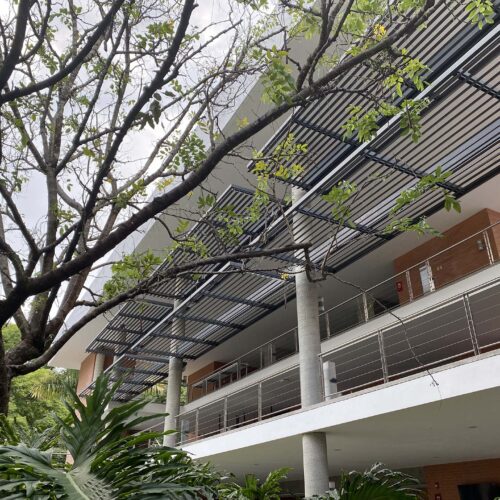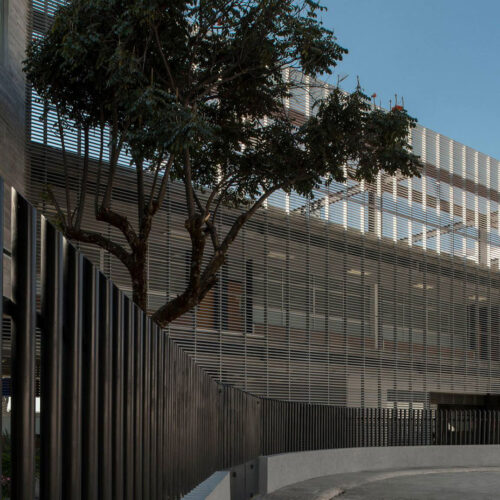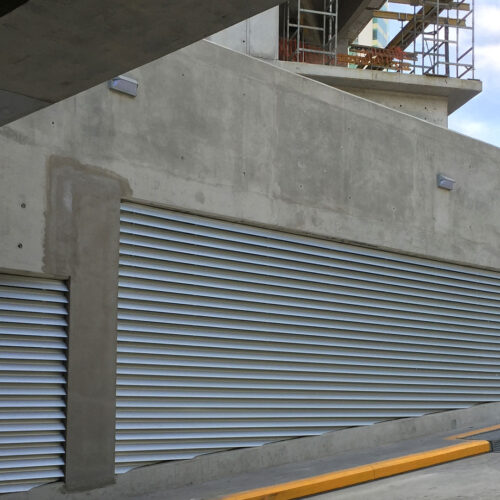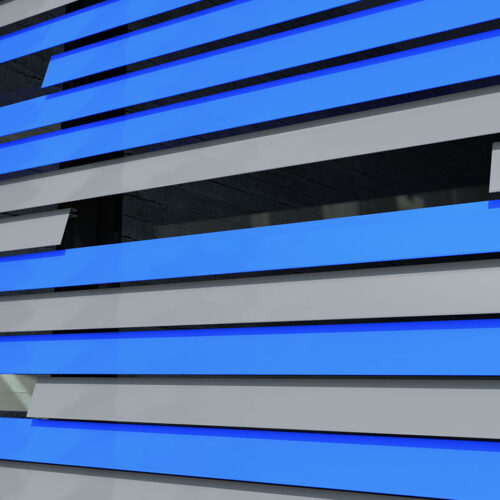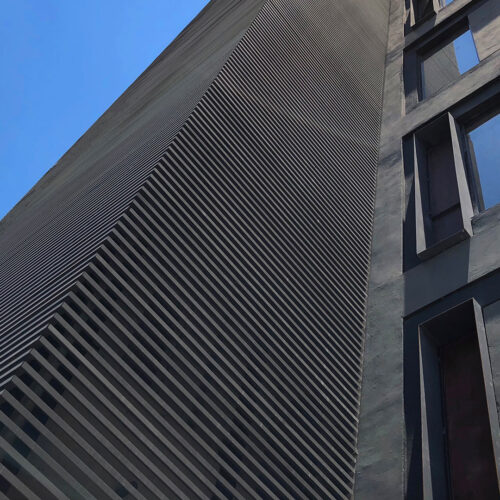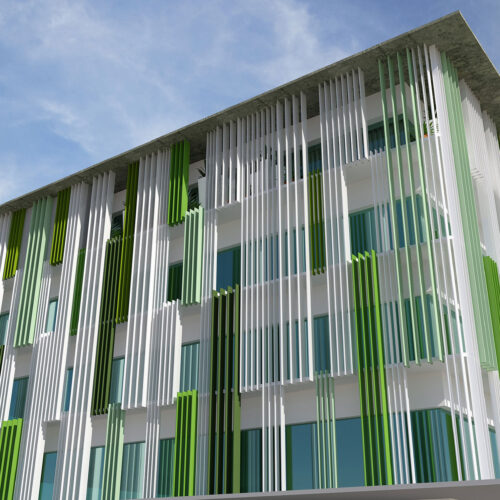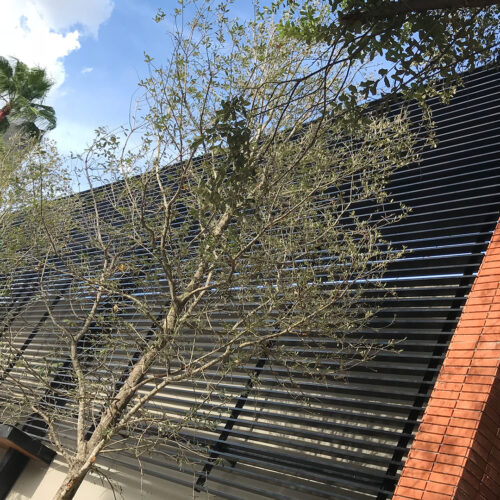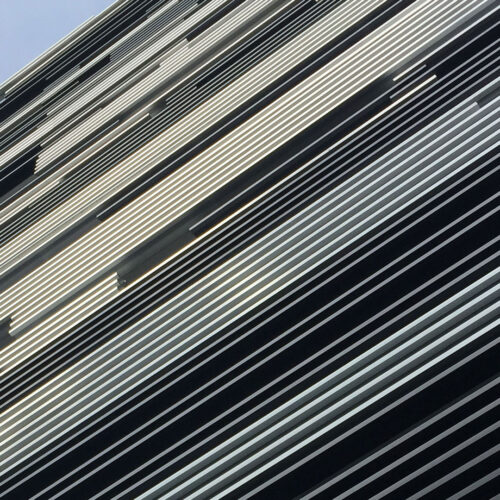What is a Louver?
Also known as exterior shutters, sunshades, or lattices, louvers are enclosures that, due to their design characteristics, become ideal architectural elements for construction projects with specific requirements for ventilation, lighting, aesthetics, or energy savings.
Louvers are used in a variety of applications for air movement, especially for air intake and exhaust in ventilation system designs. They are also used in the enclosures of building exteriors visible to the public, such as courtyards, terraces, galleries, canopies, and awnings, among others.
The design of louvers allows them to easily adapt to any construction opening that requires closure while maintaining controlled ventilation and lighting conditions. They are commonly used in exterior wall claddings, ventilated facades, curtain walls, or structural metal walls.
What are they used for?
Their installation allows for the avoidance of direct sunlight while still allowing some light to enter. They promote induced air circulation, block views into the interior, and prevent rainwater from entering. Similarly, they provide the possibility of closing gaps between walls, fencing gardens, enclosing spaces for ventilation, concealing staircases and laundry areas, providing ventilation for industrial warehouses, and serving as false walls, fences, or enclosures.
What advantages do they offer?
Louvers are architectural elements that add high aesthetic value to buildings while offering clear advantages in their projects, such as:
- Different levels of solar control depending on the design.
- Promote natural airflow.
- Provide sun protection.
- Preserve exterior views.
- Have a strong visual impact.
- Help improve sound insulation in buildings.
- Provide thermal control when used as ventilated facades.
- Wide variety of available models with finishes including lacquered, anodized, or wood imitation.
- Prevent rainwater entry to varying degrees depending on the design.
- Easy on-site installation.
- High durability.
- Lightweight, facilitating their application in facade renovations.
Efficient design for solar control
The angle below which a shape or a light source can be seen through the louvers is referred to as the shielding angle.
The structural nature of louvers physically blocks the passage of light at angles greater than the shielding angle. In horizontal applications at 90° with curved shapes, the surface of the louver reflects light at angles equal to or smaller than the shielding angle, favoring illumination and preventing glare during most of the sun’s circadian cycle.
When louvers are installed at angles greater than the shielding angle, they will have a minimal amount of brightness associated with the light source. The amount of brightness depends directly on the percentage of specular reflection of the louver’s profile shape and its finish.
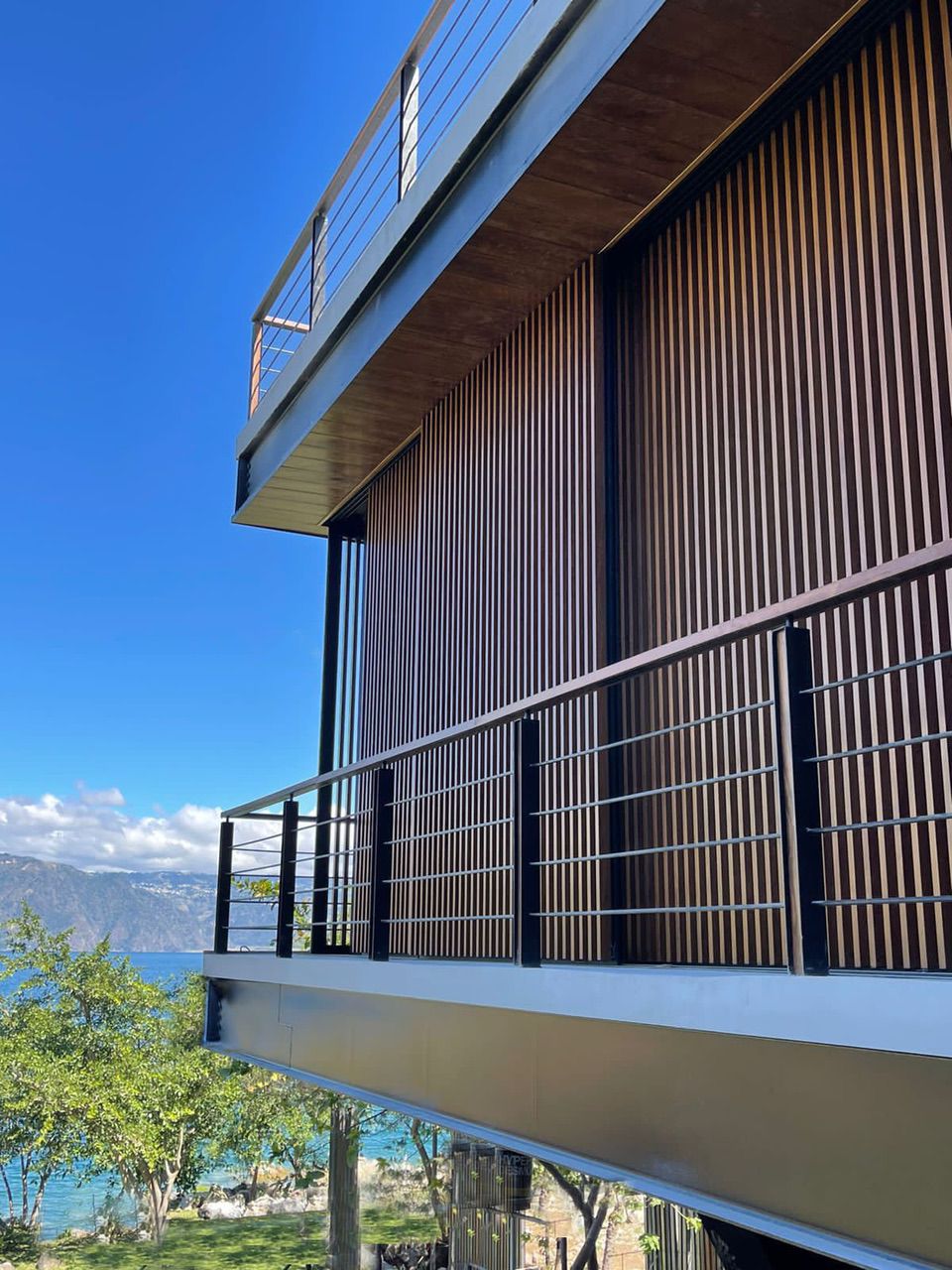
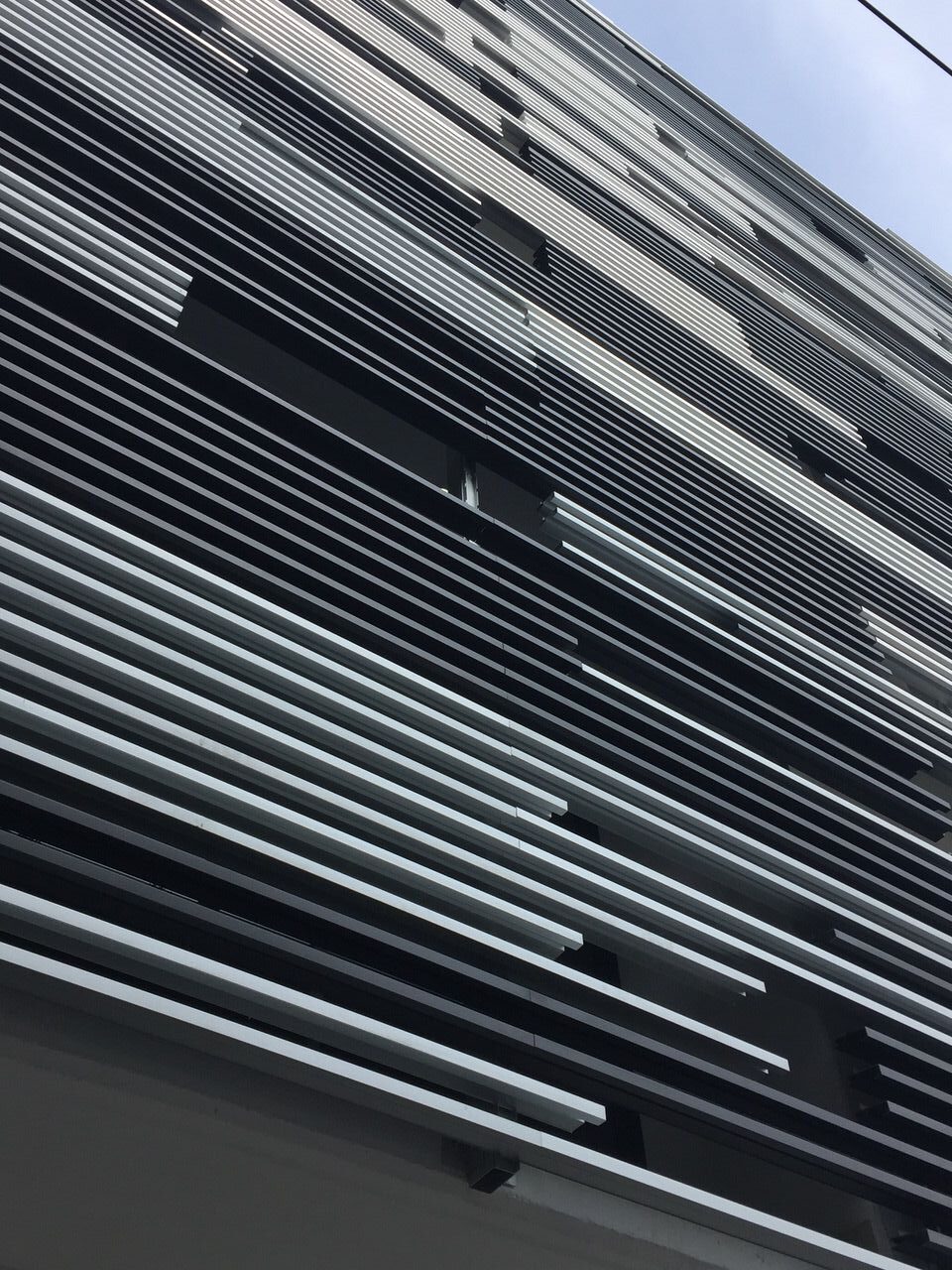
The louver can be installed horizontally or vertically depending on the aesthetic or solar control needs estimated by the architect, with the latter becoming the ideal choice for areas where visual comfort and reflection control are important.
The construction of ventilated facades through the installation of perforated louvers allows light to pass through but prevents the temperature inside the building from becoming too high, thus saving on cooling. Perforated applications give the facade an opaque appearance from the outside, while from the inside, the perforated skin practically disappears, becoming completely translucent, enhancing the view to the outside during the day and inversely during the night if the lights inside the building remain on.
Design engineering to promote ventilation
The ventilation surface provided by each louver model limits the volumetric airflow required for the proper functioning of air conditioning units. For the installation of conventional models with a 25% open ventilation area, it is necessary to increase the coverage surface of the louver (project measurement) or increase the ventilation area by reducing the number of slats per meter of height, which poses the risk of water ingress.
It is becoming increasingly common to design new shapes and systems that reduce the required coverage measurements in projects while efficiently meeting the airflow needs of air conditioning equipment.
There are louvers available on the market that are specifically designed for installation in areas where it is necessary to conceal air conditioning units, with the premise of providing a 70% open ventilation area that guarantees optimal natural airflow for the proper functioning of any equipment.
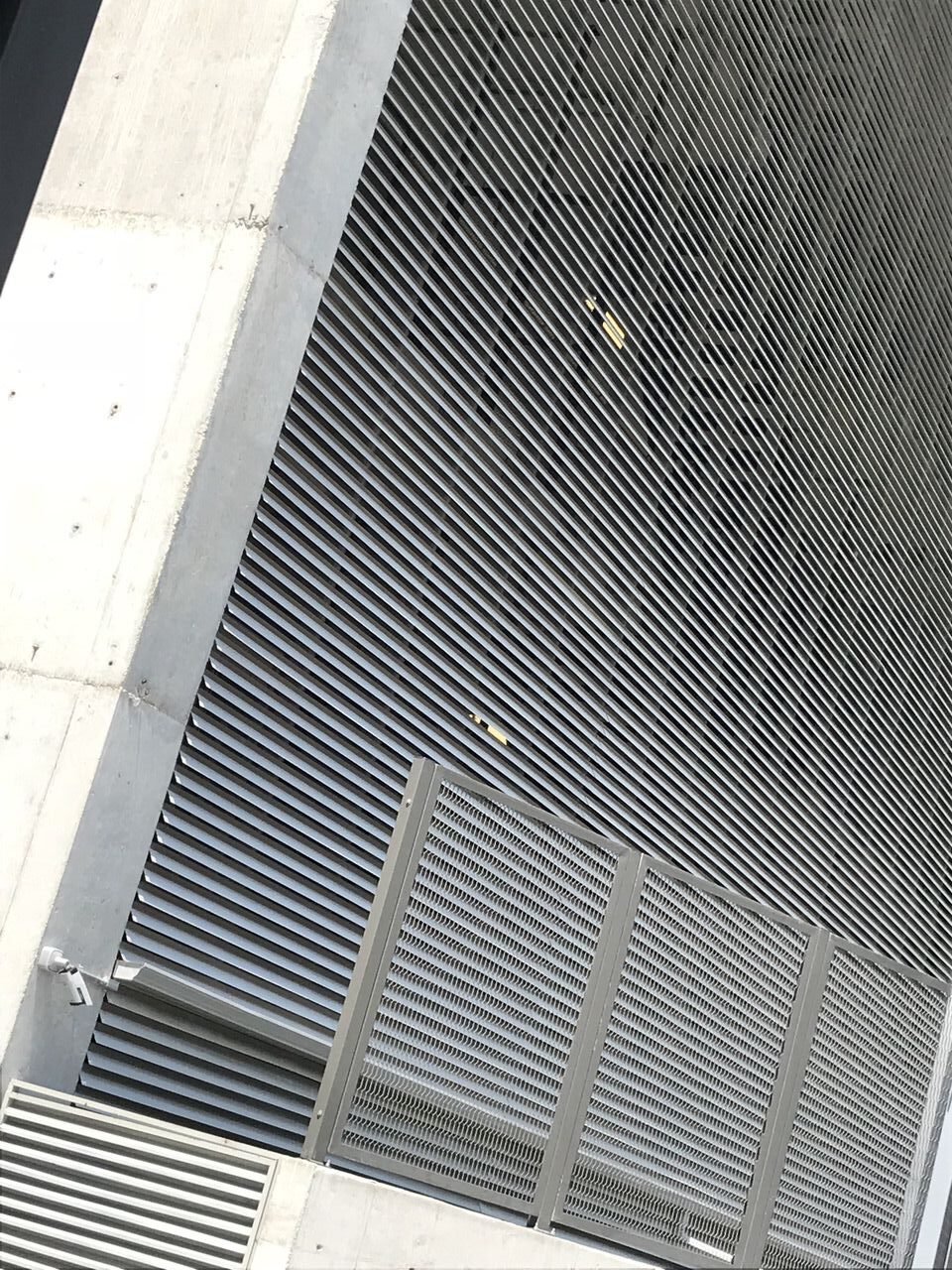
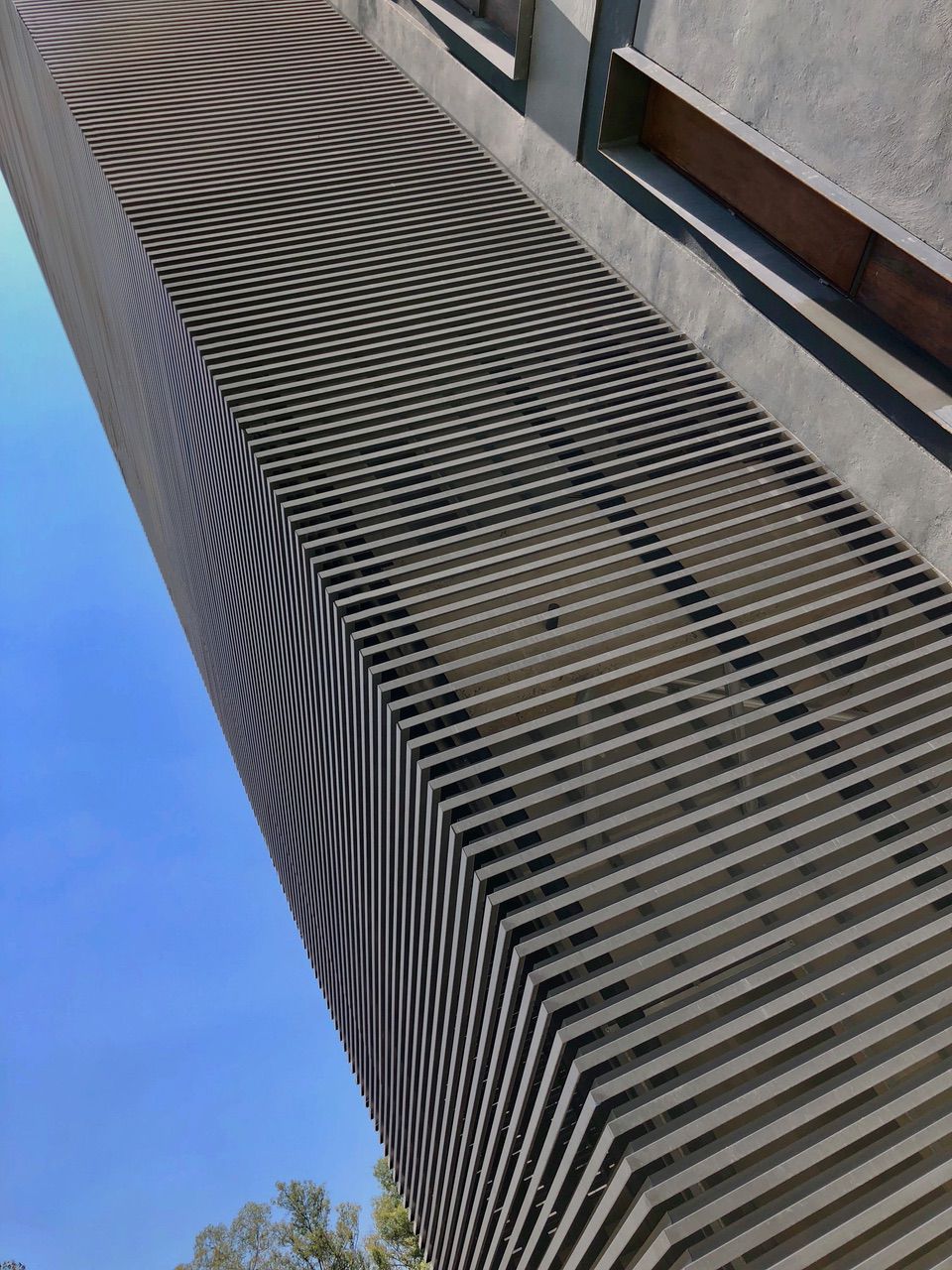
By checking the airflow passing through the open areas of the louvers, it is possible to make a viable determination of their performance, while the selection of the louver’s size and shape should be based on precise estimates regarding pressure drop, velocity, water penetration, and other geographically and climatically relevant factors.
At Simpleyfácil, we offer sustainable architectural products for facade enclosures that optimize construction insulation by providing solar control, energy savings, visual comfort, thermal efficiency, and acoustic performance.


